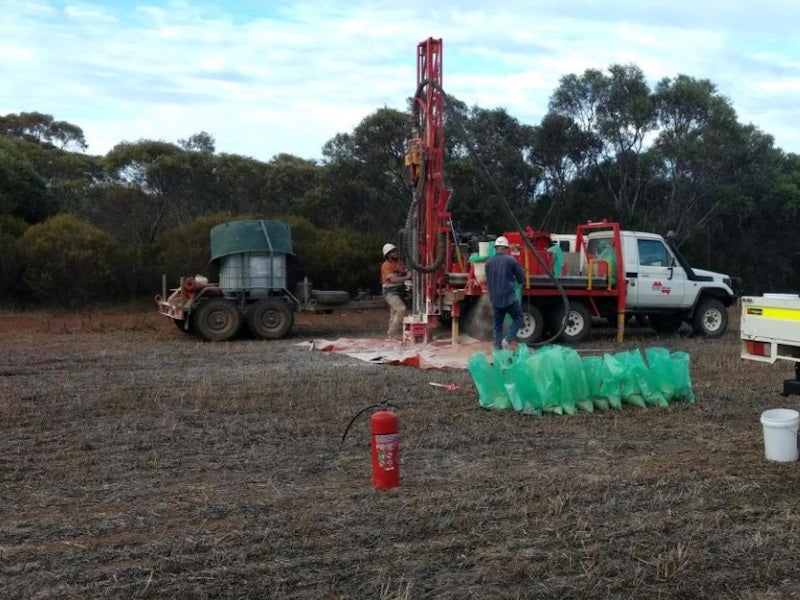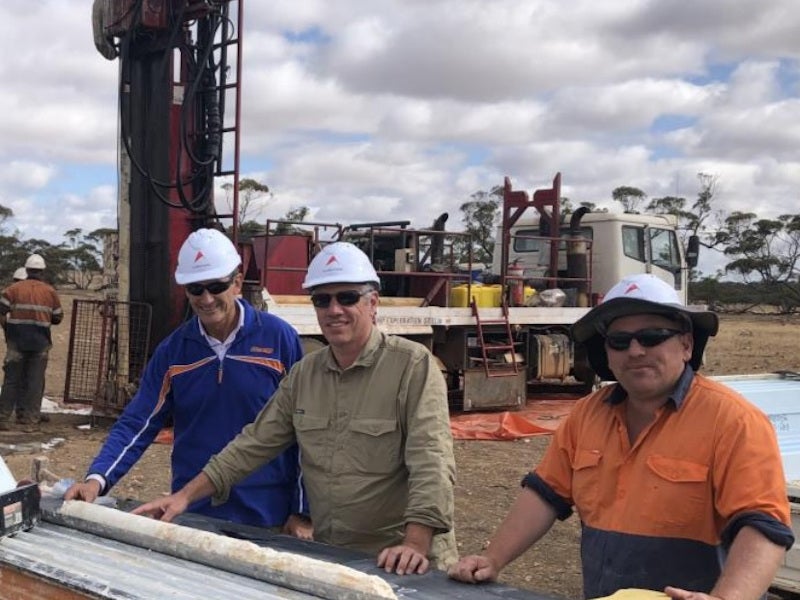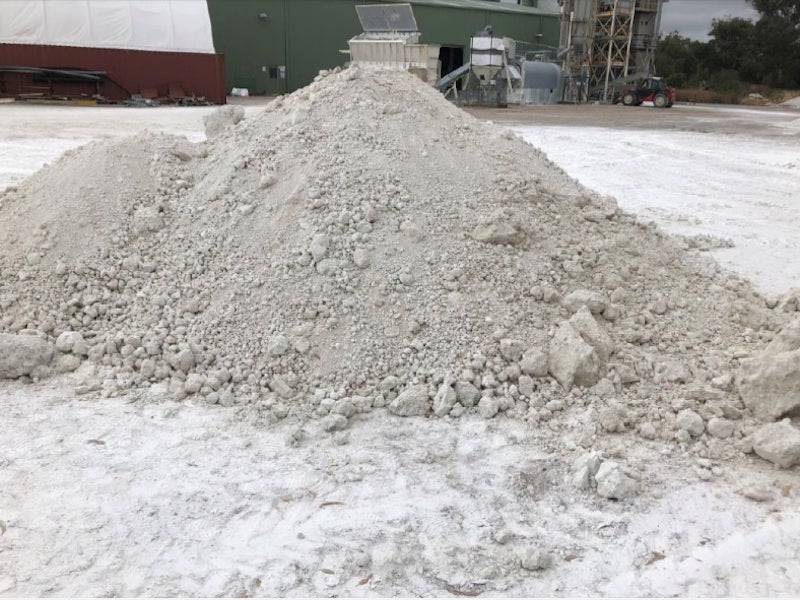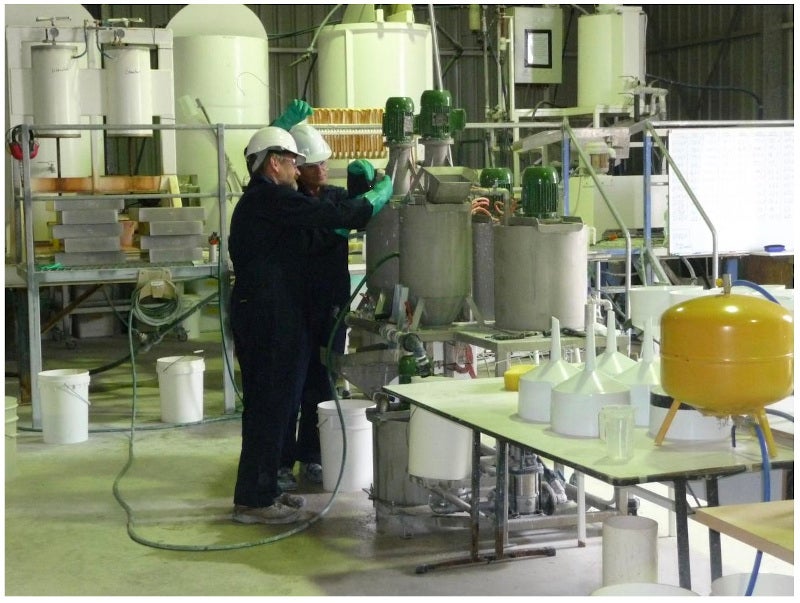The Poochera Halloysite-Kaolin project is a proposed shallow open-pit halloysite-kaolin mine comprising the Carey’s Well deposit located on the western part of the Eyre Peninsula of South Australia.
The project is a joint venture of Andromeda Metals and Minotaur Exploration. A binding agreement was signed by the two companies to allow Andromeda to acquire up to 75% in the halloysite-kaolin project, in April 2018. Andromeda obtained a 51% equity interest by fulfilling the milestone expenditure of A$3m ($1.97m) and can increase its stake by spending an additional $1.97m by April 2023 or agreeing to a decision to mine with its partner.
The halloysite-kaolin project will have an initial life of mine of 15 years and is expected to provide jobs for 30 to 40 people, upon the commencement of processing operations.
An updated scoping study confirmed that wet-processing would contribute to greater recoveries and revenues when compared to dry-processing. A pre-feasibility study is currently underway and is expected to be released in the second quarter of 2020, followed by environmental impact assessments (EIA) and the preparation of a mining proposal application for approval.
The partners are planning to start operations in late 2021 after receiving all the required permits and completion of a definitive feasibility study. However, the project schedule is anticipated to be affected by the ongoing crisis caused by the Covid-19 pandemic.
Poochera Halloysite-Kaolin project location, geology and mineralisation
The Poochera project contains two major geographic areas situated in the western province of South Australia. The main focus area is located 130km away from the town of Ceduna and 635km from Adelaide.
The Carey’s Well deposit is located in proximity to Poochera in the western part of the Eyre Peninsula.
The bright white kaolin deposit is situated 45km east of Streaky Bay on the EL 5814 Tootla tenement within the Poochera project.
The project has five tenements spread across 2,069km². A new 481km² tenement application for land with potential for high-quality halloysite-kaolin is pending approval from the regulator.
The project area is defined by high-quality halloysite-kaolin deposits and the mineralisation appears to feature different halloysite-kaolinite mixtures that could be targeted by a selective mining approach. The mineralisation at the Carey’s Well deposit is open to the north, north-east, and south-east. The deposit is a sub-horizontal zone of bright white kaolinised granite resting on unweathered granite.
The deposits involve in situ development through lateritic weathering of the Hiltaba Granite, which is rich in feldspar.
Poochera Halloysite-Kaolin project mineral resources
As of February 2019, the estimated combined measured, indicated and inferred resources within the Carey’s Well deposit are estimated at 9.7Mt of kaolinised granite in the halloysite zone.
The project is projected to have an average production rate of 227,000tpa of refined premium halloysite-kaolin.
Mining at Poochera Halloysite-Kaolin project
The project is expected to involve open-pit mining of two shallow open pits in 11 stages. The mining method to be employed in the project will include the use of excavators and trucks to transport ore and waste to stockpiles.
Mining may also include limited blasting to target the near-surface harder calcrete and silcrete rocks that lie above the kaolinised granite. Operations are expected to start at the western end of the northern pit, followed by the eastern portion and the southern pit.
Ore processing
The mine will employ either dry-processing or wet-processing. The dry-processing plant design includes a front-end loader that will feed the hopper, an apron feeder and single drum beaker, heat supply and recovery equipment, feed conveyor, dryer, classifier, and bagging filter system. The reject sand from the processing is sent for backfilling into the voids. The product will be delivered to ports using road trains.
The plant will have a design throughput of 500,000tpa with the implementation of the dry-processing method. The utilisation rate is expected to be 91.3%.
The results from the wet-processing will be studied further in the pre-feasibility study.
The design for the wet-processing plant features a loader, hopper, and an apron feeder to feed a coarse pre-screening plant, a twin-shaft paddle mixer, wet screening plant, stage one and stage two hydrocyclones, attrition scrubbers, flocculant mixer, thickener, filter, buffer tank, process water tank, and portable water tank.
The coarse pre-screening plant removes tramp size (+100mm) material, while the paddle mixer breaks the -100mm size material to -4mm. A wet screening plant is used to dispose of oversize (+4mm) material.
The wet screened material (-4mm) passes through the stage one hydrocyclones from where the underflow coarse material (+45µm) is transferred to attrition scrubbers, which scrub the kaolin clay from sand. The slurry containing scrubbed sand and clay is processed through stage two hydrocyclones and the underflow is passed over dewatering screens.
The filter cake obtained after thickening the fine material and passing it through filter presses will then be stockpiled before transportation via road trains to the port.
The wet-processing technique yields 90% metallurgical recovery of kaolin clay and filter cake kaolin clay grade of 85%.
Infrastructure of the Poochera Halloysite-Kaolin project
The processing plant is proposed to be built near the pits. The partners intend to design and build the project infrastructure based on the engineering, procurement and construction management (EPCM) model.
Planned to be developed as greenfield development, the Poochera Halloysite-Kaolin project will involve the construction of access roads, water control drains, run of mine (ROM) stockpile area, office buildings, infrastructure for mining and maintenance, and process plant workshop. Additional infrastructure at the site will include assay laboratory, power station, water pipeline, LPG and diesel fuel storage. The mine site is accessible from Adelaide via the Eyre Highway.
The wet-processing method will use recycled water from the plant. The project is considering the use of chemicals to reduce the amount of water required for dust suppression. It will also tap rainwater for ore processing and dust suppression purposes.
The power needs will be met by an onsite LPG-fuelled power generation facility.
Contractors involved
H&S Consultants prepared the updated mineral resource estimates report for the project in August 2018.
Golder Associates was contracted to conduct a preliminary geotechnical study, while CPC Process Engineering was chosen to perform process plant design work and prepare estimates for capital and operating costs.
Grinding Solutions and CDE Global were awarded contracts to conduct the testwork for wet-processing metallurgy.







